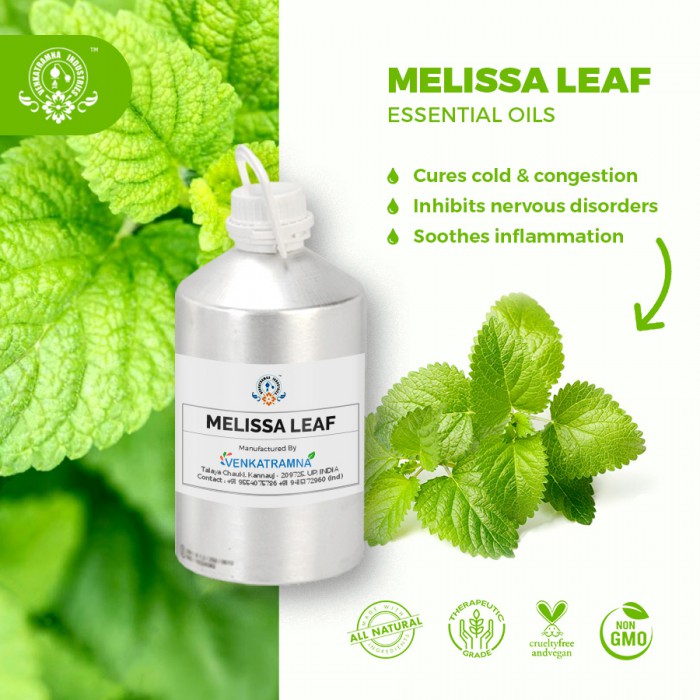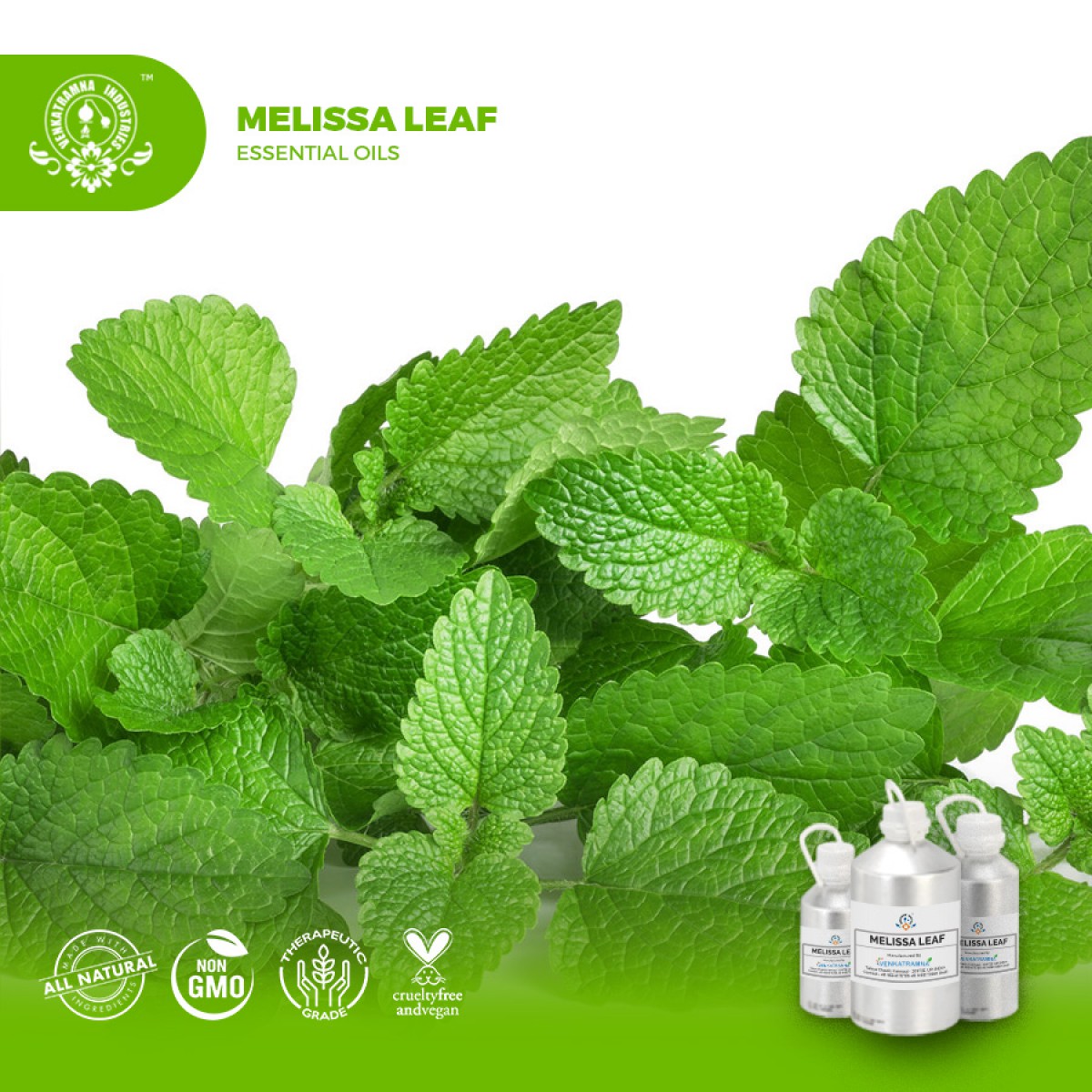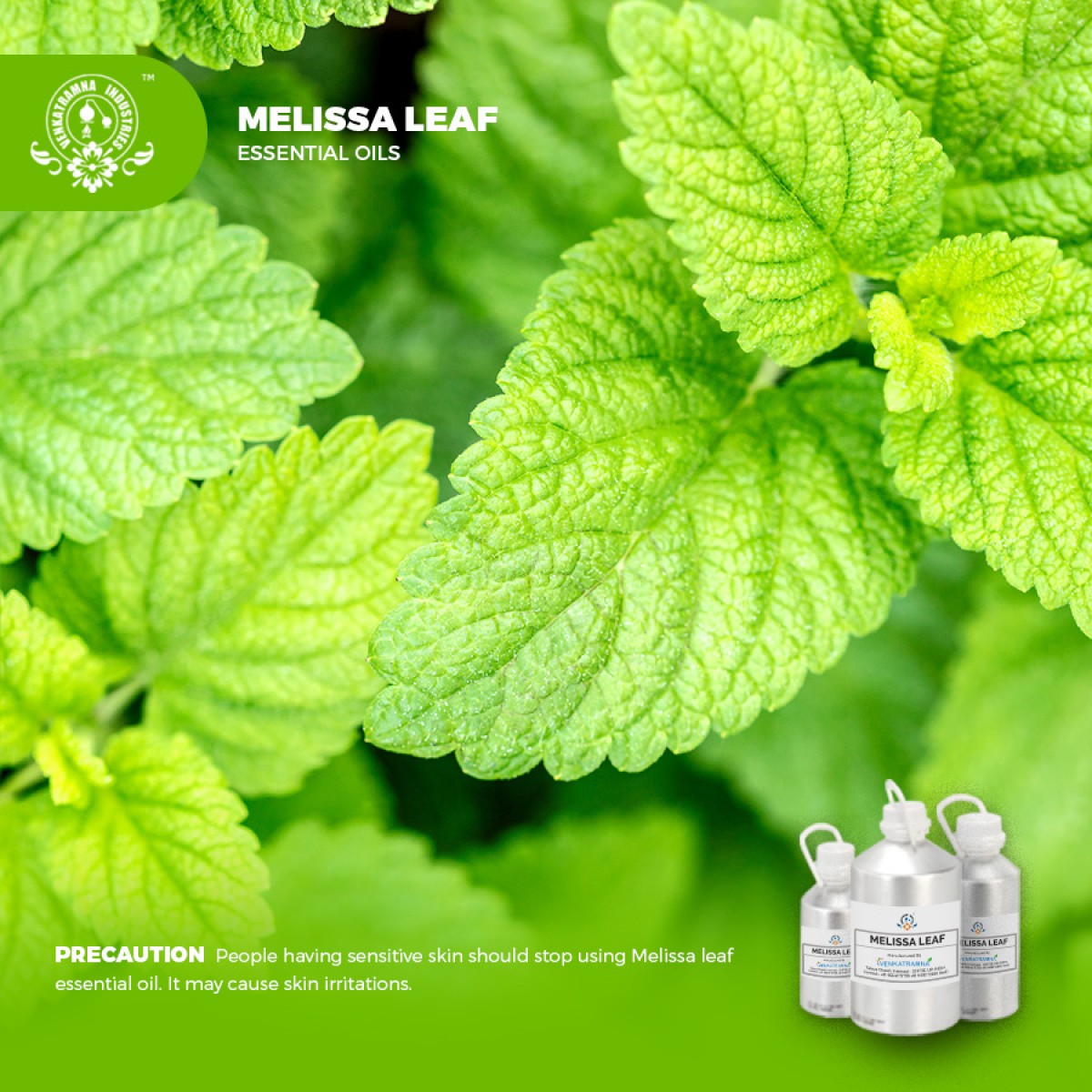Botanical Name: Melissa Officinalis Common name: Lemon Balm Plant Read More
|
Botanical Name: |
Melissa Officinalis |
|
Common name: |
Lemon Balm |
|
Plant
family: |
Lamiaceae |
|
Genus: |
Melissa |
|
Appearance/Color: |
A Clear and Colorless
liquid with critic-rose aroma. |
|
Odor: |
light and sweet-lemony aroma of herbs. |
|
Blends With: |
Geranium, Ylang Ylang,
Chamomile, Lavender, Tea Tree, Chamomile and Peppermint concentrations. |
|
Origin: |
England |
|
Source: |
Leaves |
|
Method
of Extraction: |
Steam
Distillation |
Melissa officinalis L, also known as lemon balm, bee balm, honey balm, is a perennial herb. It is a member of the Lamiaceae (mint) family, and lemon balm (Melissa officinalis) belongs to a genus that includes 5 species of perennial herbs native to Europe, Central Asia, and Iran. Although Melissa officinalis originated primarily in Southern Europe, it is now naturalized around the world, from North America to New Zealand. Lemon balm occurs naturally in sandy and scrubby areas but has also been reported to grow on damp wasteland, at elevations ranging from sea level to the mountains. In Iran, this plant is known locally by the names Badranjbooye, Varangboo, and Faranjmoshk.
DISCLAIMER
The complete range of conditions
or methods of use are beyond our control therefore we do not assume any
responsibility and expressly disclaim any liability for any use of this
product. Information contained herein is believed to be true and accurate however,
all statements or suggestions are made without warranty, expressed or implied,
regarding accuracy of the information, the hazards connected with the use of
the material or the results to be obtained from the use thereof. Compliance
with all applicable federal, state, and local laws and local regulations
remains the responsibility of the user.
The FDA has not evaluated the
statements on this website. No claims are made by Venkatramna Industries as to
the medicinal value of any products from vriaroma.com or by us. The information
presented here is for educating our customers about the traditional uses of
essential oils and is not intended to diagnose, treat, cure, or prevent any
disease. You are responsible for understanding the safe application of these products.
If you have any questions, please call or email us for further information.
As per NAHA guidelines, New Directions Aromatics
(NDA) does not recommend the ingestion of essential oils. It is imperative to
consult a medical practitioner before using Essential Oils for therapeutic
purposes. Pregnant and nursing women and those taking prescription drugs are
especially advised not to use this product without the medical advice of a
physician. The oil should always be stored in an area that is inaccessible to
children, especially those under the age of 7.
Historically lemon balm has been said to
possess sedative/tranquilizing, anti-gas, fever-reducing, antibacterial,
spasmolytic, hypotensive, memory-enhancing, menstrual-inducing, and
thyroid-related effects; antiviral and antioxidant activities; antifungal,
antiparasitic, and antispasmolytic activities; flatulence; asthma; bronchitis;
amenorrhea; cardiac failure; arrhythmias; ulcers; and wounds. Besides, it has
been said that it is effective in treatment of headaches, indigestion, colic,
nausea, nervousness, anemia, vertigo, syncope, malaise, insomnia, epilepsy,
depression, psychosis, and hysteria.
The leaves of lemon balm, Melissa officinalis L (Lamiaceae), are used in
folk medicine for their digestive, carminative, antispasmodic, sedative,
analgesic, tonic, and diuretic properties, as well as for functional
gastrointestinal disorders.
COMMON
USAGE
·
Uplifts mind from depression
·
Reduces insect bites
·
Heals cuts & wounds
·
Soothes sensitive skin
·
Acts as natural astringents
·
Nourishes skin
·
Diminishes fine lines
·
Tightens pores
·
Awakens skin
Ingredients:
|
S. No |
Key Constituents |
Strength (%) |
|
1 |
Terpenes |
|
|
|
?-Pinene |
40.0-60.5 |
|
|
cis-p-Meth-2 en-7-ol |
|
|
|
2-Pinen-4-one |
|
|
|
Nerol acetate |
|
|
|
Citronellal,
ocimene, linalool, and ethric oil |
|
|
2 |
Phenolic Compounds |
|
|
|
Patchoulene |
11.8 |
|
|
1R-?-Pinene |
|
|
|
Isogeraniol, Geraniol Verbenol
Carane Geraniol acetate |
|
|
3 |
Nitrogen Compounds |
8.0-15.7 |
|
4 |
Flavonoids |
0.5 |
Safety Summary
·
Hazards: Not Known
Organ Specific Effects
·
Acute toxicity: No Data Available
·
Skin corrosion/irritation: May be
irritating to skin.
·
Serious eye damage/irritation: No Data
available.
·
Germ cell mutagenicity: Not specified
·
Carcinogenicity: No Data Available.
·
Reproductive toxicity: Not specified
·
STOT-single exposure: Not specified
·
STOT-related exposure: Not specified
·
Aspiration hazard: Not specified
·
Information on the likely routes of exposure:
Skin/scalp contact.
·
Symptoms related to the physical, chemical,
and toxicological characteristics: None known. Irritation of the eye if
exposed: Redness of the skin if irritated.
·
Toxicity
o
Acute fish toxicity: LC50 / 96 HOUR – No data
available
o
Toxicity to aquatic plants – No data available
o
Toxicity to microorganisms – No data available
o
Toxicity threshold – No data available
·
Persistence and degradability:
Biodegradation is expected
·
Bio-accumulative potential:
Bioaccumulation is unlikely
·
Mobility in soil: Unknown
Avoid exposure to marine environments and waterways





 MSDS-Melissa.pdf
MSDS-Melissa.pdf




